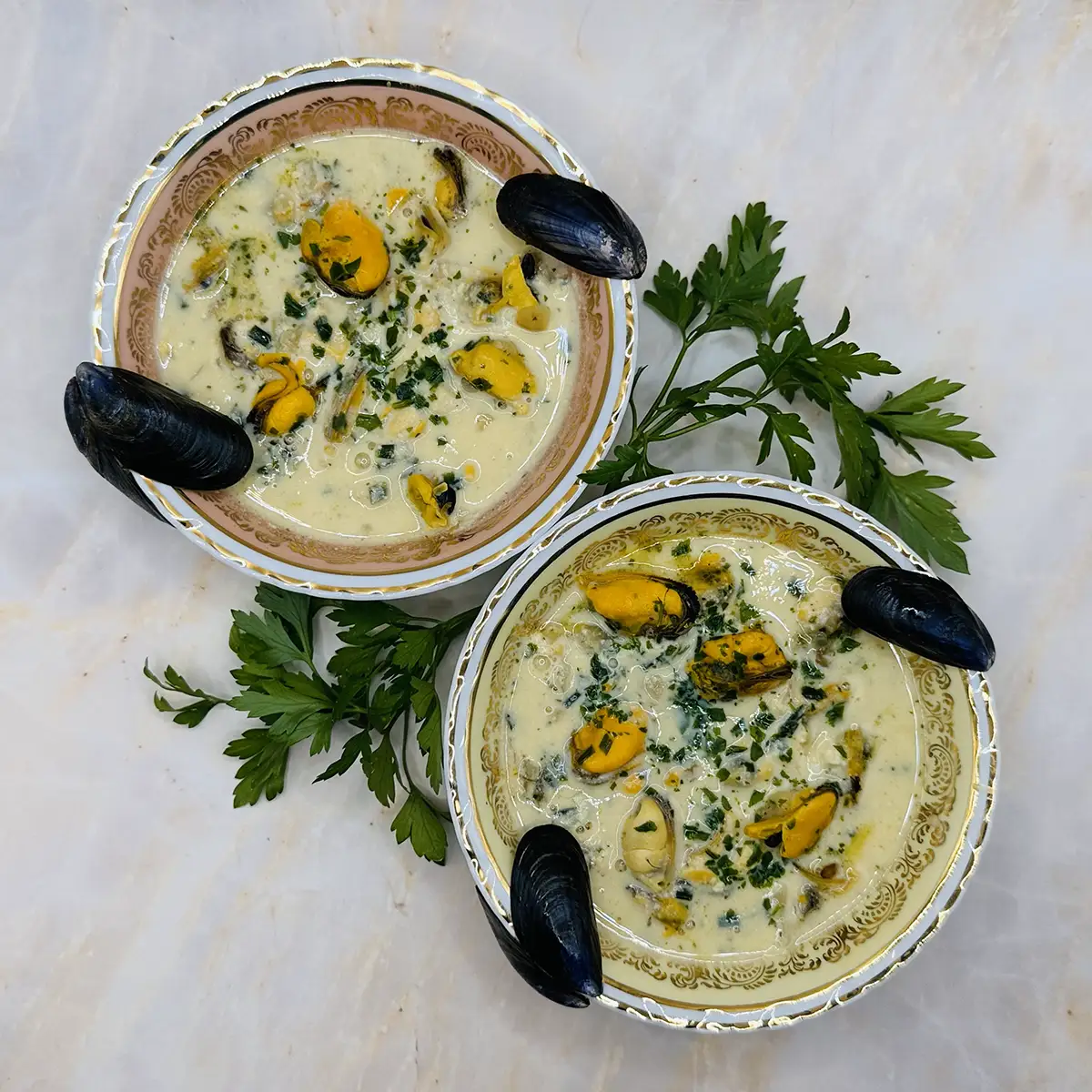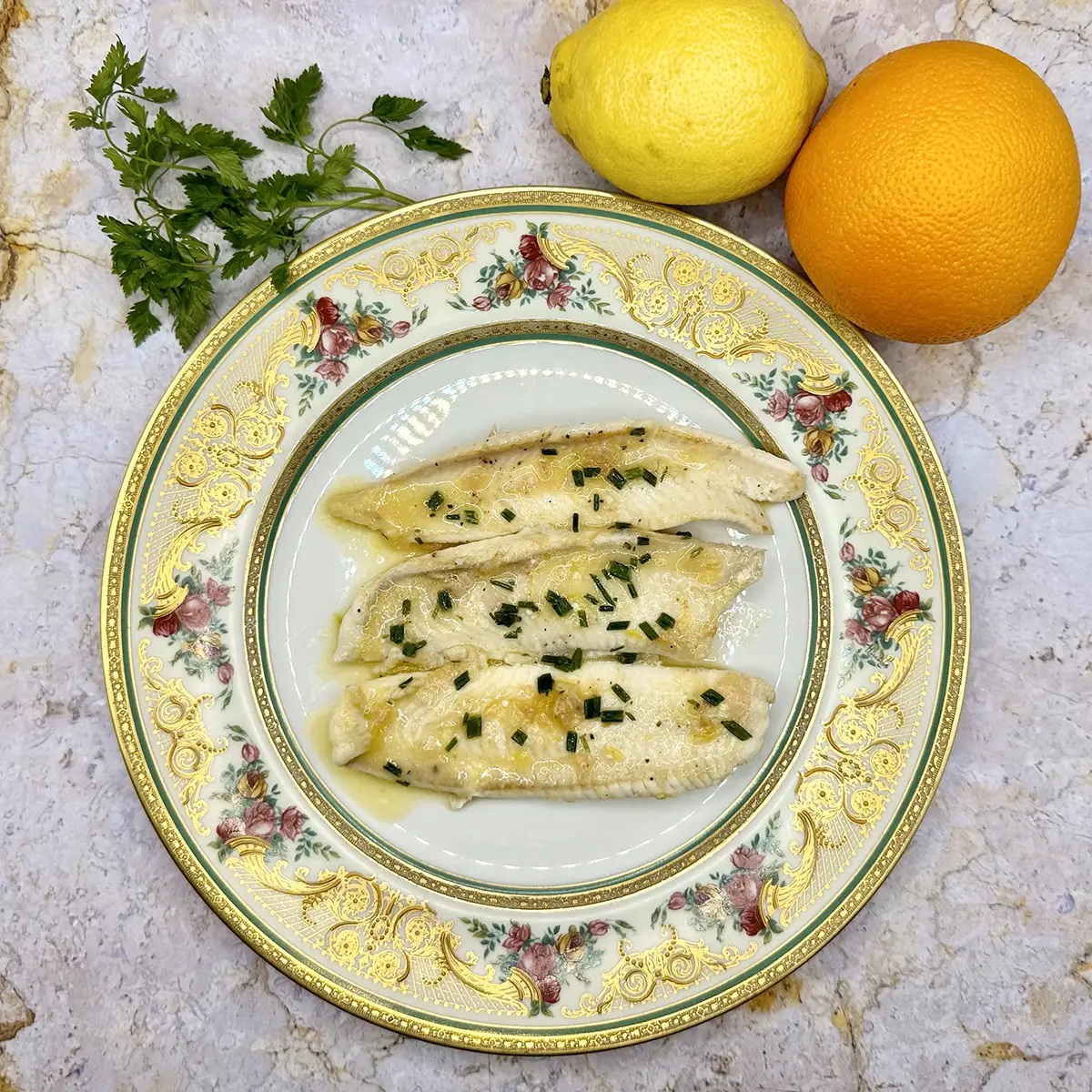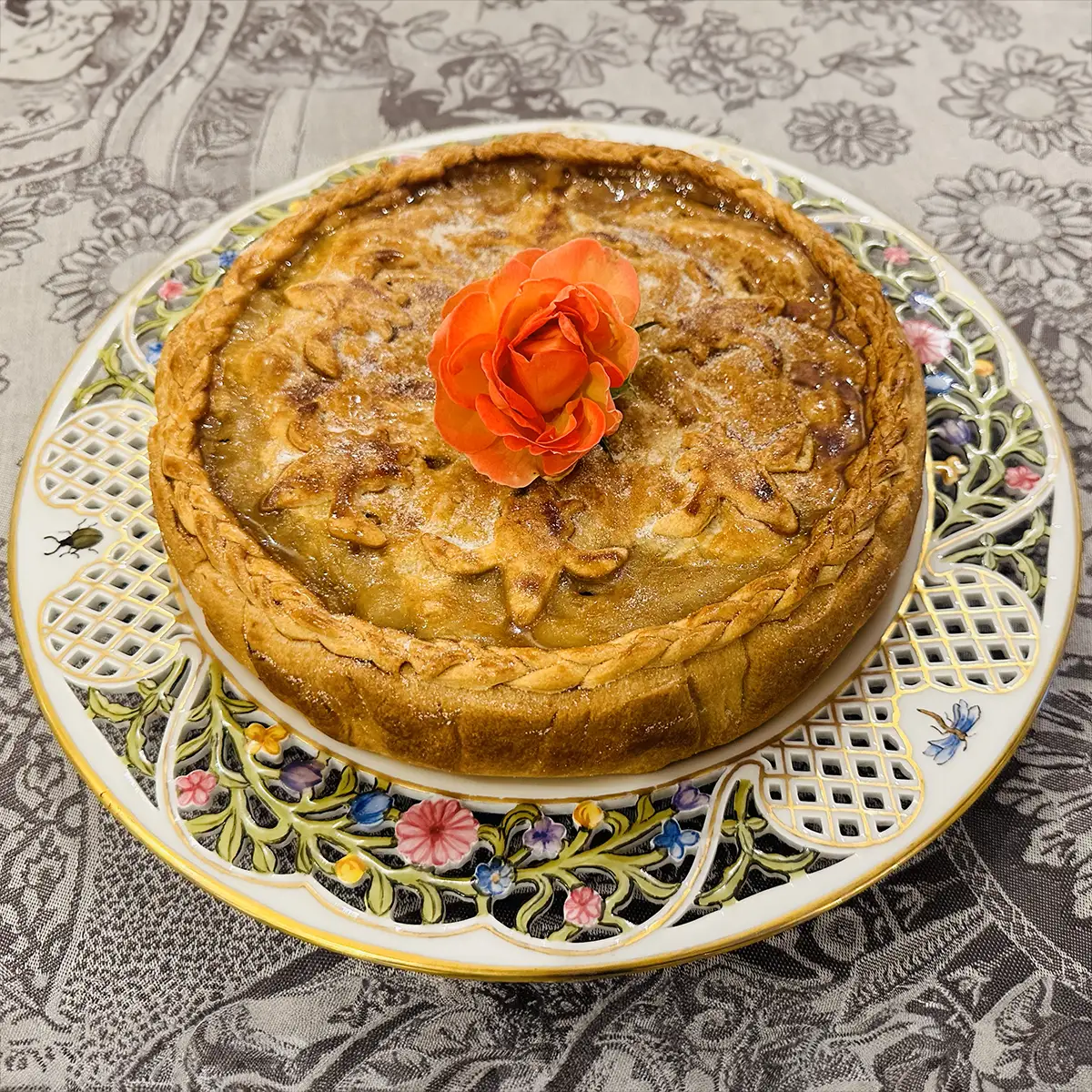With the table of times gone by,
discover the gastronomy of the Grand Siècle, or aristocratic cuisine
discover the gastronomy of the Grand Siècle, or aristocratic cuisine

A new balance between modernity and tradition redefines gastronomy
Between the end of the 16th and the beginning of the 17th century , we witnessed the emergence in France of a new cuisine , aristocratic cuisine , with its codes, methods and know-how. Spices give way to bouquets garnis and aromatics, butter is essential in many dishes, we see the birth of stews, sauces, broths and other cooking funds to concoct dishes.
A new culinary art is born, more modern, definitively breaking with medieval tradition. The profile of the Gourmet appears, resonating with a certain refinement of morals and a new sensitivity of all the senses. The notions of taste and pleasure become necessary and support the most refined of quests. Chefs, each more creative and innovative than the last, follow one another and table etiquette becomes a true art of living.
The 17th century , still called the Grand Siècle , left its mark on gastronomy, and with it “ la Table à Française ” established itself as a mark of elegance and refinement. After the opulence and decorum of the Renaissance, the reign of Louis XIII marked a culinary eclipse. That of the Sun King ( Louis
French gastronomy then sets its rules in kitchens, with what is considered to be “good taste”, in relation to food. A culinary approach and art full of subtleties and requirements developed in bourgeois and aristocratic homes. During this period of French history, marked culinary controversies crystallized between the most modernists and the traditionalists, with disagreements appearing at the heart of cooking works.

The Grand Siècle Era marks the birth of great cuisine and a certain art of the table
Grande cuisine and its codes
Thus the “ French-style service more complex during the Grand Siècle (17th century was enriched with numerous codes . At court, protocol refinement and the era of domesticity were at their height.
Let us think of the " ambiguous " prepared by François Vatel, the greatest French butler, on August 17, 1661 at the Château de Vaux Le Vicomte for Louis XIV on the occasion of the party organized by Nicolas Fouquet, superintendent of the King's Finances , in honor of the latter (without knowing that he would have regretted it…). Ambigu is a feast subtly merging the characteristics of a light snack and a supper, where meat dishes and sweet treats are served together. All the preparations, whether hot or cold, salty or sweet, are arranged with artistic elegance on a single dresser, orchestrating an exquisite display that delights the view as much as the palate. The ambiguous is very well described in the book "The art of treating well" (1674), page 360 " we first put everything together, but with a very correct order and compartment which pleasantly delights the senses and which gives from the appetite to the most disgusted . The service at Ambigu can be compared to the most magnificent buffets of our days, with the difference that the guests are seated around the table.
The guests, depending on their rank and place, do not have access to all of the dishes, which as soon as they have been touched, are reserved at other tables, used for the preparation of stuffing or even for the servants' meals.
Note also that the resale of leftovers made up part of the servants' wages at this time. We can easily imagine that by loading the dishes as much as possible and accelerating their rotation on their masters' tables, they get more profit. A dish placed in the middle of the royal table is never left empty; this would also lack elegance and decorum.
The Christian religion remained powerful during the Great Century. As during the Middle Ages, meat is not eaten on days considered lean, out of respect for dogma. During so-called fasting periods (Lent, etc.), a snack of sweet dishes is authorized in the evening, complementing the only meal of the day.
The transition from a lean day to a full day, the "medianoche" or even the "reveillon" (midnight), gives access to a meat meal and marks the time for entertainment at the king's court.
The art of the table in the Grand Siècle
The table, set in an elegant and refined way, is decorated with flowers arranged in garlands. The tablecloths are white, linen or damask. In the center of the table, we find the
“especially”, also called “dormant”: a piece of goldwork which brings together salt shakers, spices, mustard, oil, vinegar, sugar, vases and torches.
Each guest is provided with an individual place setting: knife, spoon and three-pronged fork are placed on one side of the plate, but the use of the fork remains limited: it goes from the dish to the plate to serve, then your fingers take over for tasting. For the record, it was in the 17th century that, at the table, the blade of the knife became rounded and this is thanks to Richelieu who no longer tolerated his guests using the tip of the knife to pick their teeth (which I understand perfectly).
Louis XIV adores splendor and, at court, plates and cutlery are made of silver. It was during this same century that the nobles had their coat of arms engraved on the back of the cutlery. According to legend, it was Cardinal Mazarin who brought the soup plate back from Italy in 1653 (this plate is called “mazarine”).
Bottles and glasses are absent from the tables (particularly for fear of poisoning). When they wish to drink, guests must ask the servants. The glasses are placed in canopies arranged on sideboards.

How is a meal composed at the Table of Louis XIV?
During the era of the Grand Siècle, the formal ordering of the royal dinner was required.
Here is an example of a “ small place setting meal that Louis so don't think about a light ) including a squab bisque and partridge with cabbage. Next come the starters, charcoal pies and butchered chicken with truffles. For the second course, roasts, meat and fish. Finally, for dessert, he is served dried plum and cherry jams, candied oranges, orange peels, marzipans and biscuits, figs, melons and various compotes.
For the “ Grand Couvert ”, the crowd flocks to the antechamber of the king's apartment to attend the meal that the sovereign shares with his family. This dinner is divided into five courses: the first is that of soups. Then comes the second course, that of meats, which will be accompanied by salads. The third course, that of desserts, precedes the fruit pyramid. And to finish his meal, the Sun King appreciates being served a hard-boiled egg and sweets. During this supper, approximately 40 dishes presented ...
The king ate a lot, too much according to his doctors, who were worried about his gout attacks. But Louis XIV was greedy and above all, as we have just seen, well served.
What did we eat during the Grand Siècle? Pleasure above all!
This is undoubtedly a cuisine that prioritizes pleasure well before well-being and health. Moreover, the gastronomy of the Grand Siècle no longer concerns itself with the old precautions and other health rules previously applied. Thus, the use of foodstuffs that can be harmful (such as mushrooms or the abundance of truffles, etc.) is accelerating and slowing down the use of spices from distant territories, used by ancient Galenic medicine (medicinal and corrective of defects of health).
Fattier and more dense sauces are preferred instead of finely acidic sauces (vinegar and agretto have been used as disinfectants for centuries). The love of good food is no longer perceived as a sin of gluttony, but rather as the very expression of good taste and a healthy belief which in truth developed during this era: good dishes promote maintaining good health.
The decline of spices, in favor of aromatic herbs
Spices are no longer considered rare commodities; during the Grand Siècle, we observed their democratization in the heart of numerous urban markets. Their consumption is becoming commonplace, refined tables are replacing them with aromatic plants which will give rise to the famous bouquet garni, the “packet”, often used today (thyme, bay leaf, parsley, chives, tarragon, rosemary, etc.).
Appearance of sauces, stews, juices and coulis
The cuisine of the Grand Siècle became more technical , innovative methods emerged.
Meats and fish are no longer softened, sugar is no longer used in abundance, but preferred for baking. Lean sauces are gradually disappearing, and mustard is the last survivor. The fatty, voluptuous and tasty sauces take their place, composed of butter, eggs, cream which mix with refinement with the delicacy of the new flavors of fresh herbs.
The roux (even if we don't call it that yet) comes into being with a new binding technique (based on butter and flour); This technique appears for the first time in the book “Le Cuisinier François” (1651) by La Varenne in a recipe for raspberry turkey. Massialot, in his "The Royal and Bourgeois Cook" offers us several recipes for coulis , which he defines as " a type of sauce, used for connections and to give a pleasant flavor to things "; this ancestor of our funds, is prepared with a kind of meat broth (or vegetables, for lean days) enriched with a binding agent (bread, flour), seasoned with salt, pepper and fresh herbs then passed through a sieve.
Emulsified sauces are perfect accompaniments to fish (pike, etc.). It was at this time that Hollandaise sauce was created, whose name is a tribute to the French victory in the Dutch War (1672-1678).
Another great innovation of this time was the practice of deglazing roasted meats in closed containers, giving rise to the “grand nourishing broth”. This broth is generally composed of beef, veal, mutton, their offal, various poultry and bacon, to which a “packet”, in other words a bouquet garni, is commonly added.
The return of vegetables to the kitchen
The Great Century honored vegetables (even root vegetables, which had been poorly received until then), which marked their comeback.
Louis in the vicinity of the Château de Versailles. This remarkable gardener (who is a lawyer converted to horticulture) develops, to the great pleasure of Her Majesty, techniques (manure to heat the soil, glass bells, windbreaks) allowing the picking of peas at all early spring and having lettuce and asparagus in the middle of winter. The sovereign is also a great fan of pears and La Quintinie, in order to satisfy him, cultivates around fifty varieties of pears in the vegetable garden.
This famous Potager du Roy still exists today and I invite you to go see it, because its visit is really worth the detour.
Pleasure comes in sweets and drinks
The art of jams, compotes, jellies and marmalades is essential, just like coffee and tea which are becoming trendy drinks. Le Procope , a Parisian place popular with the intellectual fringe and thinkers (writers, philosophers) of the time, opened its doors in 1674. It was the first café created.
Chocolate its wooden handle and its lid pierced in the center to allow the mousseir (ornate wooden rod) to mix the chocolate.
The assembly and production of champagne , perfectly mastered by a Benedictine monk, but also an oenologist, Pierre Pérignon (known as Dom Pérignon), promoted its success on royal tables during the 18th century .

Books and references on the table in the 17th century
- On the revenue side :
- The Cook François de La Varenne
- Moonstone's Cook
- The Royal and Bourgeois Cook of Massialot
- Gastronomy in the Grand Siècle by Françoise Sabban and Silvano Serventi
- 100 Recipes from the time of Louis XIV by Anne de Bergh and Joyce Briand
- To find out more about the culinary art of the Grand Siècle :
- Vatel, The splendor of the table under Louis XIV by Nicole Garnier-Pelle
- At the table of the Sun King, story and recipes by Marie and Françoise de La Forest
- Gourmet Memory of Madame de Sévigné by Jean-Yves Patte and Jacqueline Queneau.








